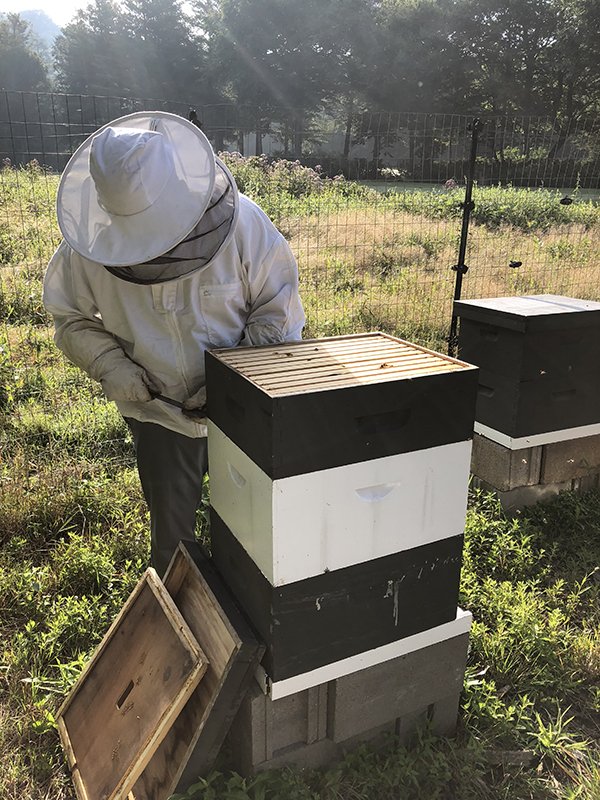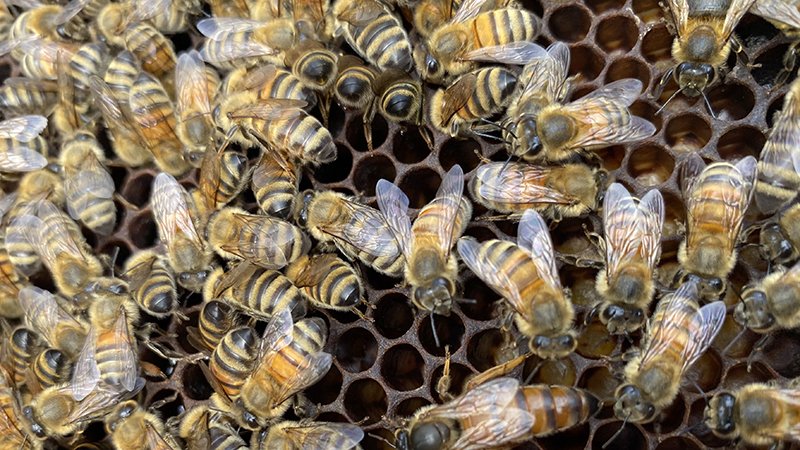As golf course superintendents continue on the path toward sustainability, two practices that go hand-in-hand — beekeeping and converting out-of-play areas to naturalized plots — are becoming increasingly mainstream in the realm of golf course maintenance.
Beekeeping helps protect an important, yet invasive, species, and creating naturalized areas provide them, as well as native pollinators, with a food source.
 There is much to learn before taking the plunge into beekeeping. Considerations include expense, time and educating golfers.
There is much to learn before taking the plunge into beekeeping. Considerations include expense, time and educating golfers.
"If someone is really interested in honey bees and wants to be a beekeeper, I encourage them to think about why they want to do that," said Elise Bernstein, outreach coordinator and researcher with the Spivak Bee Lab at the University of Minnesota. "One beekeeper is not going to save the honey bees. It's time-intensive and it's expensive, as well."
There are 20,000 species of bees found worldwide, including 4,000 found in the U.S., most of which are prolific pollinators. Ironically, the honey bees that are common across the country actually are native to Europe, not North America. Populations of managed honeybee colonies, which can average 60,000 bees per colony during summer, decline by 30 percent to 50 percent each winter.
There is not much known about wild bee colonies and how they fare over the winter.
"Loss rates of managed colonies depend on the year and the weather," said Reed Johnson, Ph.D., associate professor of entomology at Ohio State University. There are more wild colonies than we know. We don't know much about them. It is hard to know what their status is."
Golf courses make better habitat for bees than what most backyard hobbyists can offer, but they need more than just space, says Bernstein.
"Golf course superintendents have access to so much acreage. They can create awesome habitat for bees," she said.
"If honey bees don't have access to ample food supplies, they're not going to do well. We can support honey bees and native bees with lots of native plantings."
In their search for food, bees have a foraging range of about 3 miles, so even with naturalized areas on the golf course, bees will spend much of their time off site. Conversely, the golf course likely becomes a forage site for bees from elsewhere, be it wild bees or someone else's managed colonies.
Both populations need food supplies throughout the year, not just through the golf season.
"Fall forage is a problem for bees. There just aren't a lot of fall-blooming plants," Johnson said.
"Bees are as lazy as anything else. If a food source is close, they'll take whatever is closest first."
Some fall-blooming forage options that bees prefer include some of the asters that flower in autumn, goldenrod and the bees' favorite food source - white clover.
Clover can be found among the plantings in naturalized areas on Highlands Falls Country Club in the mountains of North Carolina, where superintendent Josh Cantrell and his predecessor, general manager Fred Gehrisch, CGCS, have been managing bee colonies for about nine years.
Since then, the bees, which are kept near the 14th green have become a PR success story, the importance of which cannot be overstated given what some think about golf.

"They're thriving here on a golf course. We're not killing them," Cantrell said.
"The first year, we started with two hives just to see how it goes. We got enough honey to sell at the pro shop. Now, the members love it."
That operation has grown to eight colonies, or upwards of a half-million bees through the middle of summer. The honey harvest now totals about 7 gallons annually.
"That's a lot of 8-ounce bottles," Cantrell said. "And it's all gone in about two days."
Cantrell's job does not stop there. Keeping bees is a 12-month-a-year job to ensure they have enough food over winter and are managed to control the invasive varroa mite parasite that is among the threats to honey bee populations in North America.
"We also have to feed them through the winter because they stay outside," he said. "We give them sugar water, clean the hives and treat the bees for mites."
Cantrell admitted there was a brief period of bees and keepers getting acclimated to one another.
Bees are as lazy as anything else. If a food source is close, they'll take whatever is closest first.
"It's a ridiculous amount of bees," Cantrell said laughing. "It was kind of intimidating at first when we would check on the queen and pull the frames out. If it was early in the morning or on a calm day they are usually pretty relaxed. If it's windy, or there is a change in the barometric pressure, they can get pretty agitated."
Bernstein reminds those interested in beekeeping that native bee species should warrant consideration when planting pollinator-friendly plants and flowers.
Bumble bees can be important pollinators of tomatoes, and Bernstein points to two native species — the rusty patch and yellow banded bumble bee — that have experienced significant population decline about 25 years ago.
"We don't know exactly what caused the decline," she said. "We suspect it was caused by a virus or disease."
Disease also is a concern for managed honey bee colonies, as well, she said, and too many bees in one area can be a bad thing, says Bernstein.
"Managed bees and native bees can compete for resources," she said. "And a lot of colonies in one area can cause the spread of disease.
"Do things to support bees. Plant flowers to create habitat and food sources."

